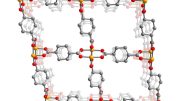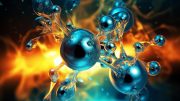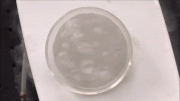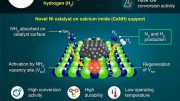
Researchers have demonstrated that a solid formed from ammonia and methane plasma can use sunlight to catalyze amine-to-imine conversions, a process potentially pivotal in the formation of early biomolecules. The study suggests the primordial atmosphere may have provided the necessary catalysts for such conversions, supporting the evolution of early RNA molecules.
Nitrogen-doped graphite catalyzes reactions to give early biomolecules.
The sun, pivotal in powering the first biochemical molecules on Earth, facilitated crucial reactions along with catalysts that sped up chemical processes. A group of researchers has recently demonstrated that a substance derived from the interaction of ammonia and methane plasma has the potential to harness light energy to facilitate amine-to-imine transformations.
This mechanism could have been a significant contributor to the formation of the earliest biomolecules. The findings were recently published in the journal Angewandte Chemie.
Between three and four billion years ago, on primordial Earth, the first biomolecules were being formed prior to an explosion of life. These early chemical reactions, however, required catalysts. Xinchen Wang and a team of researchers from Fuzhou University in China have discovered that the primordial atmosphere itself could have served as a source for these catalysts.
Using methane and ammonia gases, which were most likely present in the hot gas mixture shrouding the world in the Archean age, the team used chemical vapor deposition to produce nitrogenous carbon compounds as possible catalysts. They found that, in a reaction chamber, molecules condensed out of an ammonia and methane plasma onto a surface, quickly growing to form a solid nitrogenous carbon polymer similar to nitrogen-doped graphite.
As the team observed, the irregularly incorporated nitrogen atoms gave this polymer catalytically active sites and an electron structure that enabled it to be excited by light. The researchers then turned to proving the extent to which the substance could reduce or oxidize other substances under the effect of light.
One of the most significant reactions on early Earth may have been imine formation. Imines, also referred to as Schiff bases, are a dehydrogenated form of amines, compounds composed of carbon, nitrogen, and hydrogen. Many chemists assume that, on primordial Earth, imines may have served in the formation of the first hereditary molecules of ribonucleic acid (RNA). Wang and his team could show that their plasma-generated catalyst can convert amines to imines using nothing other than sunlight.
The team says that carbon nitride-based photocatalysts, such as the plasma-generated substance, could have lasted for millions of years and produced important chemical intermediates. In addition, they could also have served as a source of carbon- and nitrogen-containing compounds. By demonstrating that it is possible to produce such a catalyst using only the gases and conditions present in the atmosphere of early Earth, the study sheds new light on the possible evolutionary path taken by biomolecules.
Reference: “Plasma-Enhanced Chemical-Vapor-Deposition Synthesis of Photoredox-Active Nitrogen-Doped Carbon from NH3 and CH4 Gases” by Yan Wang, Yuanxing Fang, Yankun Wang, Haisu Wu, Masakazu Anpo, Jimmy C. Yu and Xinchen Wang, 22 June 2023, Angewandte Chemie International Edition.
DOI: 10.1002/anie.202307236
The study was funded by the National Key Technologies R&D Program of China, the National Natural Science Foundation of China, and the 111 Project.









This is backwards…”The Sun, pivotal in powering the first biochemical molecules on Earth.” They must have forgotten about the damaging role of solar UV on early biochemical reactions. Without at least a primitive ozone screen these reactions would have a serious problem taking place, much less going forward to make cells capable of photosynthesis.